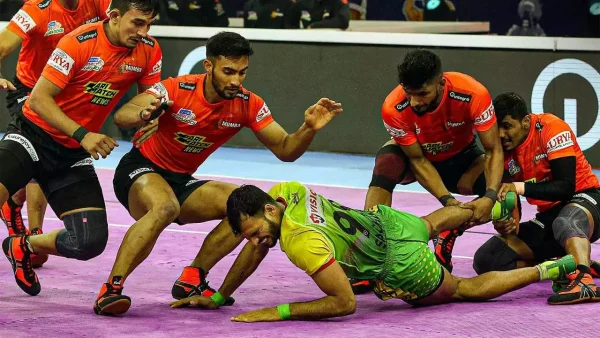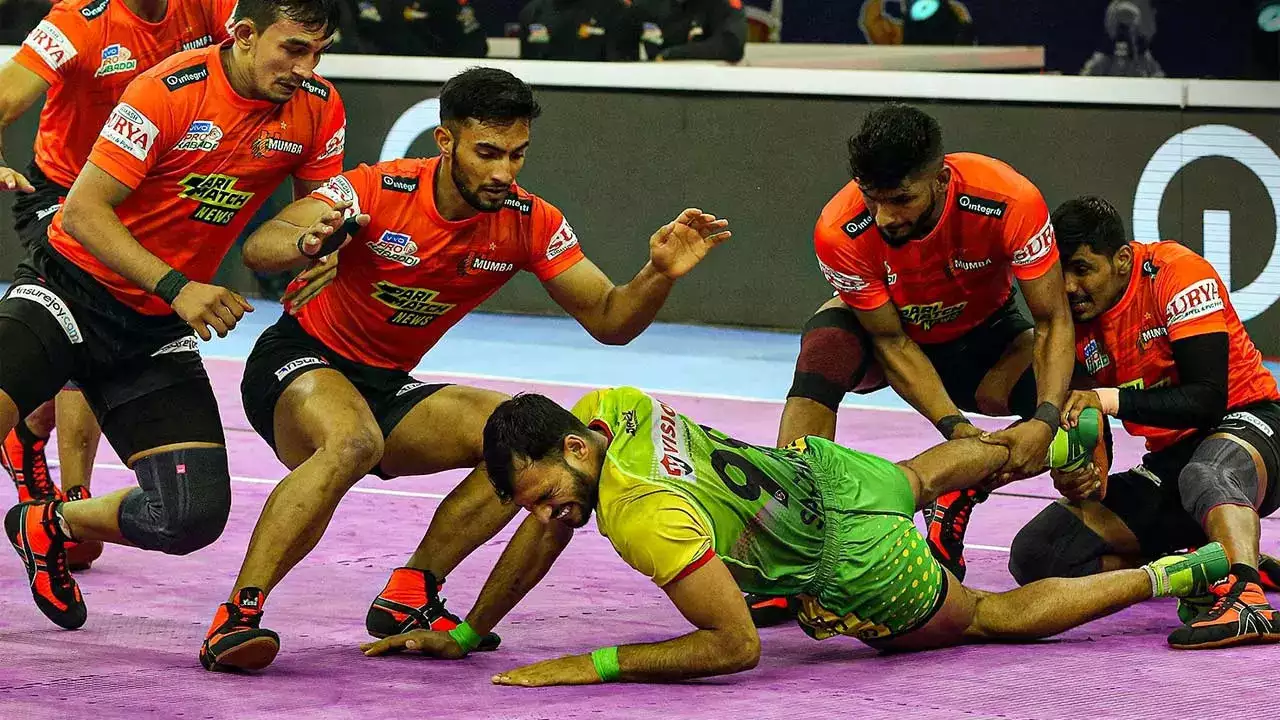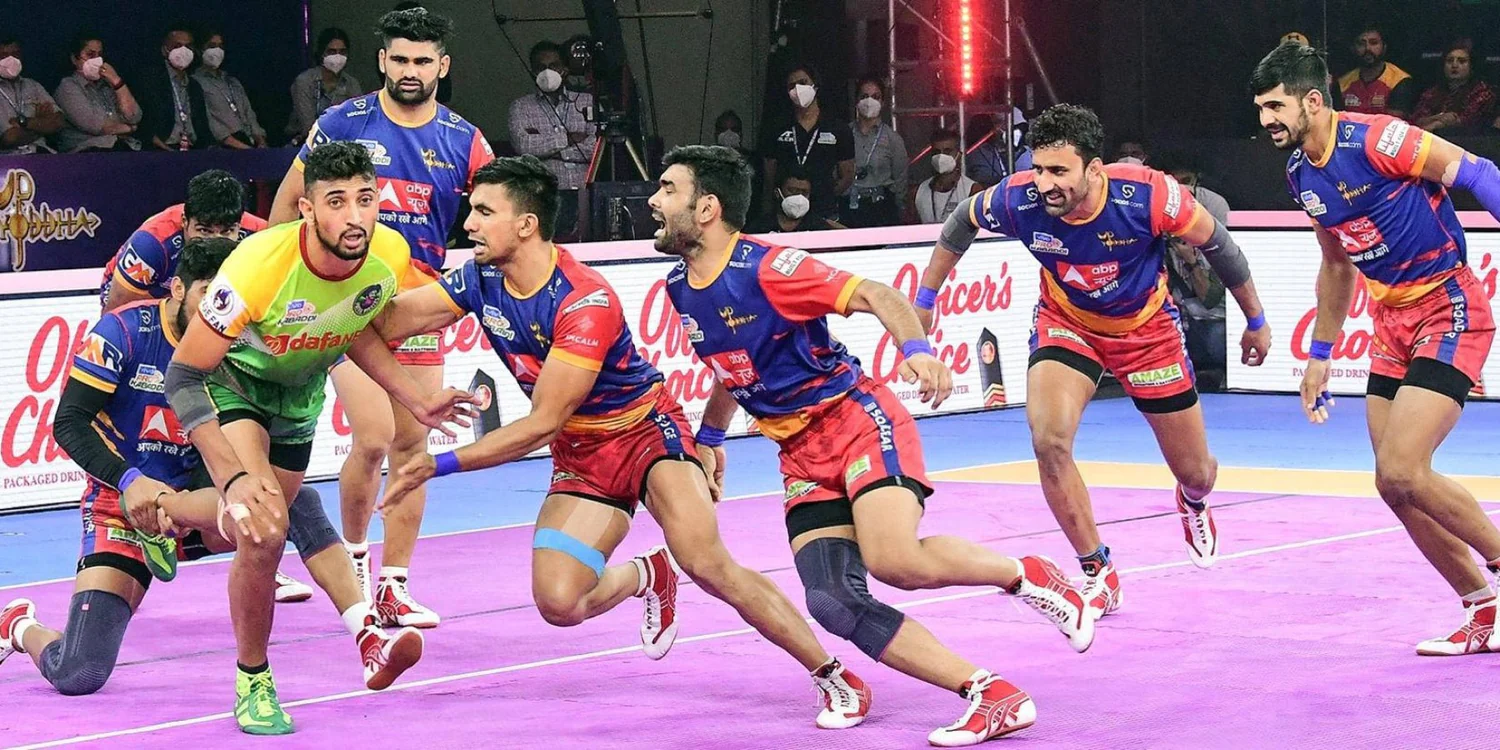In Kabaddi, team strategies are as important as individual skills. Whether you’re raiding or defending, effective team tactics can make the difference between victory and defeat. In this article, we’ll discuss some of the most effective strategies for both attacking and defending in Kabaddi, and how teamwork is key to executing them successfully.

-
Attacking Strategies – How to Plan a Successful Raid
Raiding is one of the most exciting parts of Kabaddi. As a raider, your objective is to tag defenders while staying on your feet and returning safely to your side. A well-planned attack requires more than just speed and agility; it requires coordination and understanding of your opponent’s defense.
Key Attacking Tactics:
- Raider Movement: The raider must use deceptive movements, such as fakes and sudden direction changes, to confuse the defenders. The goal is to create an opening and exploit it.
- Timing: The best raids are those where the raider times their attack perfectly. Waiting for the defenders to spread out or lose focus can create opportunities to score.
- Team Support: Teamwork is vital in raiding. Defenders must position themselves strategically to allow the raider to escape easily, and raiders must communicate with their teammates to ensure smooth transitions.
- Super Raids: A successful super raid, where the raider tags three or more defenders in a single raid, is a powerful tactic that can quickly change the momentum of the game.
Advanced Tips:
- Diversify Your Approach: Avoid being predictable. Use different movements and speeds to keep defenders guessing.
- Speed and Precision: Focus on executing your raid quickly and accurately to reduce the defenders’ chances of reacting in time.
-
Defensive Strategies – How to Stop the Raider
Defending in Kabaddi is a high-pressure job, requiring quick thinking, strong teamwork, and excellent positioning. The main objective of defenders is to stop the raider from tagging them and to prevent them from escaping back to their side.
Key Defensive Tactics:
- Chain Defense: The chain defense is a technique where multiple defenders form a barrier to prevent the raider from passing through. By closing off possible escape routes, this tactic makes it harder for the raider to score.
- Super Tackle: If your team has only three or fewer players on the mat, a successful tackle is considered a super tackle, earning more points. This requires precise timing and coordinated effort between the defenders.
- Anticipating the Raider: Successful defenders can anticipate the raider’s next move and adjust their position accordingly. This can be achieved through observation and quick reactions.
- Ankle and Thigh Holds: These are two of the most common and effective techniques for tackling the raider. By focusing on the raider’s lower body, defenders can bring them to the ground and prevent them from escaping.
Advanced Tips:
- Positioning: Stay in a position that allows you to block the raider’s path without being caught off guard. Always be ready to move quickly.
- Team Communication: Communication between defenders is critical. Alert each other to the raider’s movements and be ready to adjust your positioning to support each other.
-
Mid-Court Strategies – Balancing Attack and Defense
The mid-court is where much of the action takes place, as both the attacking and defending teams will be vying for control. Effective mid-court strategies are key to gaining the upper hand and executing successful transitions between defense and attack.
Key Mid-Court Tactics:
- Controlling the Game: Mid-court players must control the tempo of the game, supporting raiders by blocking defenders and ensuring that the team’s defense is organized.
- Quick Transitions: Successful teams can quickly shift between offense and defense. A mid-court player should be ready to transition between roles at a moment’s notice.
- Pressure on the Raiders: The mid-court defenders should keep the raiders under constant pressure, preventing them from getting comfortable and making successful raids.
Advanced Tips:
- Be Versatile: Players in the mid-court should be able to perform both defensive and offensive duties. This versatility allows teams to react to changes in the game and create more opportunities.
- Work as a Unit: The mid-court players need to communicate and collaborate to maintain control of the game. Understanding each player’s role is essential for success.
-
Team Coordination – The Key to Success
Successful Kabaddi teams are those that work as a cohesive unit. Whether you’re raiding or defending, coordination and communication are key to executing strategies effectively.
Key Aspects of Team Coordination:
- Communication: Clear and constant communication between players ensures that everyone is on the same page and can adapt to changing situations during the match.
- Trust: Trusting your teammates is essential, whether you’re relying on them to support your raid or back you up when defending. A lack of trust can lead to confusion and missed opportunities.
- Adaptability: The best teams are those that can adapt to the opponent’s tactics. If the opposing team changes their strategy, your team must be able to adjust quickly and efficiently.
Advanced Tips:
- Pre-Game Strategy: Before the match, spend time strategizing as a team. Understand your opponent’s strengths and weaknesses, and develop a game plan that maximizes your team’s strengths.
- In-Game Adjustments: Be prepared to adjust your tactics during the match based on how the game unfolds. Teams that can adapt quickly often have a significant advantage.





